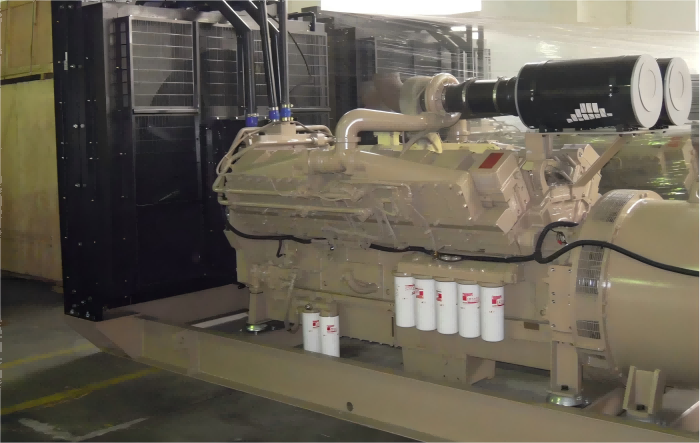Understanding and calculating CO2 emissions from diesel generators is essential for assessing their environmental impact and ensuring compliance with regulations. Diesel generators, widely used for backup and off-grid power, contribute significantly to greenhouse gas emissions. This guide provides a detailed approach to calculating CO2 emissions from diesel generators, highlighting the necessary data and methods while emphasizing strategies to reduce environmental impact.
1. Understanding CO2 Emissions
1.1 What is CO2 Emission?
Carbon dioxide (CO2) is a greenhouse gas produced when diesel fuel is burned. The combustion process in diesel generators converts diesel into electrical power, resulting in CO2 emissions as a byproduct. The amount of CO2 emitted is influenced by the carbon content of the diesel fuel and the quantity consumed by the generator.
1.2 Importance of Calculating CO2 Emissions
Environmental Impact: Diesel generators contribute to global warming and climate change due to their CO2 emissions. Accurate calculations help evaluate their impact and guide efforts to mitigate it.
Regulatory Compliance: Many regions have established limits on greenhouse gas emissions. Calculating CO2 emissions ensures that generators meet these standards, avoiding fines and regulatory issues.
Operational Efficiency: Monitoring CO2 emissions can lead to improved fuel efficiency and operational practices. Understanding emissions helps optimize generator performance, resulting in cost savings and reduced environmental impact.
2. Required Data for Calculation
2.1 Diesel Consumption
Fuel Consumption Rate: The amount of diesel a generator consumes per hour is a key factor in calculating CO2 emissions. This rate is typically measured in liters or gallons and can be determined using fuel flow meters.
Fuel Density: Diesel fuel density affects emissions calculations. On average, diesel fuel has a density of around 0.85 kg/L. This density can vary with temperature and fuel composition.
2.2 Carbon Content of Diesel Fuel
Carbon Content: Diesel fuel contains carbon that, when burned, converts to CO2. Diesel fuel generally generates about 2.68 kg of CO2 per liter. This factor is used to estimate emissions based on fuel consumption.
2.3 Generator Operating Hours
Operational Time: The total number of hours a generator operates is needed to calculate fuel consumption and CO2 emissions. Accurate recording of operating hours is essential for precise calculations.
3. Calculation Process
3.1 Determine Total Fuel Consumption
To calculate the total fuel consumed, multiply the generator’s fuel consumption rate by the number of operating hours. For instance, if a generator consumes 15 liters of diesel per hour and operates for 100 hours, the total fuel consumed would be 1500 liters.
3.2 Calculate CO2 Emissions
Estimate CO2 emissions by multiplying the total fuel consumed by the CO2 emission factor for diesel fuel. Using the example above, with a CO2 emission factor of 2.68 kg/L, the total CO2 emissions would be 4020 kg.
3.3 Example Calculation
For a diesel generator with a fuel consumption rate of 20 liters per hour and operating for 50 hours, the total fuel consumed is 1000 liters. With a CO2 emission factor of 2.68 kg/L, the total CO2 emissions would be 2680 kg.
see also: Sweden Donates 13 Diesel Generators to Ukraine Amid Energy Crisis
4. Practical Considerations
4.1 Accuracy of Data
Measurement Accuracy: Accurate measurements of fuel consumption and operating hours are crucial for reliable emissions calculations. Use calibrated instruments and ensure consistent data recording.
Fuel Quality: Variations in fuel quality can affect the carbon content and combustion efficiency. Adjust calculations if detailed fuel analysis is available.
4.2 Fuel Variability
Density Fluctuations: Diesel fuel density can vary with temperature and composition. For precise calculations, use the specific density of the fuel being used.
Carbon Content Variations: The carbon content of diesel can differ based on the source and grade of the fuel. Adjust emission factors if precise data is available.
4.3 Environmental Factors
Temperature and Altitude: Environmental conditions, such as temperature and altitude, can impact fuel combustion and emissions. Higher altitudes may result in less efficient combustion, affecting the amount of CO2 produced.
Operational Conditions: Factors such as engine load and maintenance condition also influence emissions. Ensure the generator is operating under optimal conditions to minimize CO2 output.
5. Reducing CO2 Emissions
5.1 Implementing Efficiency Measures
Regular Maintenance: Regular maintenance, including cleaning and tuning the generator, ensures efficient operation and reduces excess fuel consumption and emissions. Scheduled maintenance helps keep the engine running smoothly and minimizes CO2 production.
Load Management: Operating the generator at or near its optimal load capacity improves fuel efficiency. Avoid running the generator at very low or very high loads, which can increase fuel consumption and CO2 emissions.
5.2 Exploring Alternatives
Renewable Energy Integration: Incorporating renewable energy sources such as solar or wind can reduce dependence on diesel generators, thus lowering overall CO2 emissions. Hybrid systems that combine diesel generators with renewables offer a more sustainable solution.
Cleaner Fuels: Investigate alternative fuels or additives that may produce fewer CO2 emissions compared to traditional diesel. Some additives can improve combustion efficiency and reduce emissions.
Conclusion
Calculating CO2 emissions from diesel generators is essential for assessing their environmental impact and ensuring regulatory compliance. By accurately measuring fuel consumption and applying the appropriate emission factors, operators can estimate the CO2 produced during generator operation. Implementing efficiency measures and exploring alternative energy sources can further mitigate emissions and contribute to a more sustainable operation. Accurate emissions calculations and proactive management practices are key to minimizing the environmental footprint of diesel generators and achieving operational efficiency.
Related topics:
- How Long Can a Diesel Generator Run?
- Can Diesel Generators Run on Biodiesel?
- What Is the Working Principle of Diesel Generator

